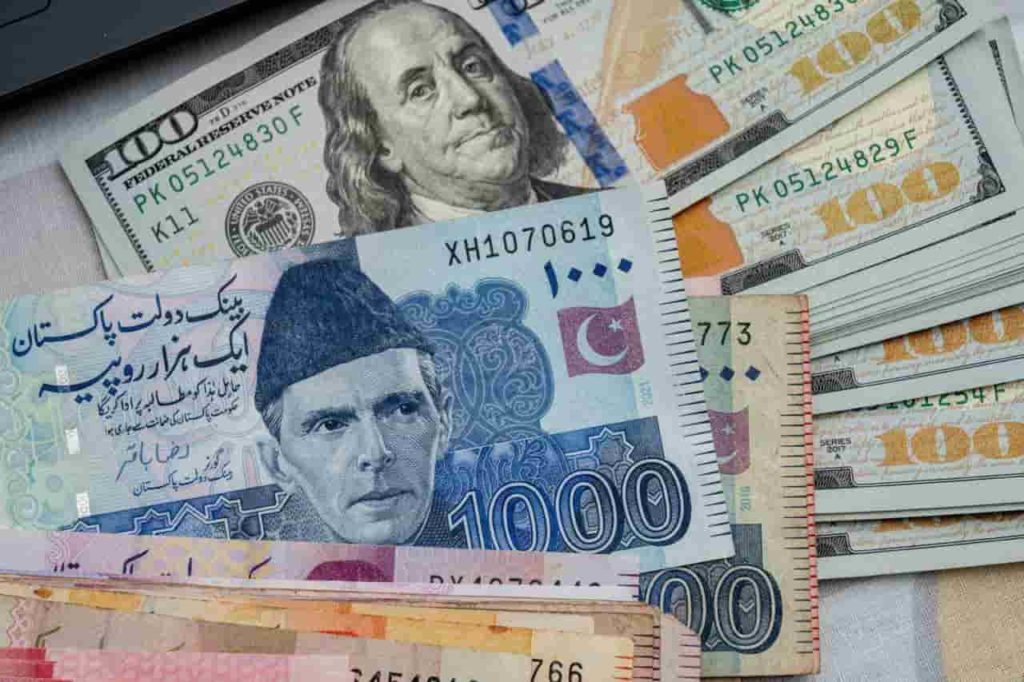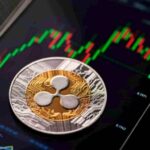The Pakistani rupee (PKR) has staged a remarkable comeback, with analysts suggesting there is still room for further strengthening.
After plummeting to a record low of 307 rupees against the dollar in early September, the currency has rebounded by over 8%, currently trading at 283 against it. This impressive recovery made the PKR one of the best-performing currencies in the past few months.
The resurgence of the Pakistani rupee can be attributed, in large part, to the government’s stringent crackdown on illicit dollar trading.
A concerted effort by Pakistan’s Federal Investigation Agency to conduct nationwide raids on exchange companies engaged in illegal dollar transactions, involving informal channels without proper documentation, played a pivotal role in this positive turnaround.
“Pakistan’s rupee was the top performer globally this month as a government crackdown on the illegal dollar trade helped reverse its fortunes,” HDFC Securities said in a recent report.
The positive momentum might persist, with the ongoing crackdown and continued enforcement of state policies further strengthening the Pakistani rupee.
“Pakistan rupee remained the world’s best-performing currency in the month of September 2023,” Tahir Abbas, head of research at securities brokerage firm Arif Habib Limited, told CNBC via email.
“The PKR currency is expected to strengthen further, given the continuation of the crackdown and enforcement of the state policy,” he predicted.
Technical analysis
In the short to medium term, several technical and behavioral factors are influencing the market dynamics. The consolidation period has notably shortened, forming distinct rectangles that indicate a potential shift in market sentiment.
The historical correction range, typically ranging between 10 to 11%, has been completed in the ongoing correction phase. The market has shown resilience by testing and confirming current support levels, leading to a resumption of the upward trajectory.
The presence of extreme oversold momentum and trend indicators suggests potential opportunities for market participants.
Turning to macro-finance factors with a medium-term impact, the landscape is shaped by increasing real interest rate differentials when compared with developed markets.
This creates a significant influence through the portfolio channel. Furthermore, rising inflation differentials with developed markets, coupled with an inelastic response of current account equations to foreign exchange rates, further contributes to the evolving market dynamics.
The prevalence of high-risk premiums in equities, long-duration bonds, and real estate adds complexity, impacting the market through the portfolio channel.
The short to medium term is characterized by evolving consolidation patterns, while macro finance factors influence the market over both medium and long-term horizons.
Looking beyond the numbers
While celebrating the rupee’s resurgence, it seems like the government has been considering the broader economic implications.
It might prioritize strategies to promote exports and attract foreign direct investments (FDI) to stimulate the demand for the Pakistani currency, further fortifying its exchange rate.
However, skeptics question the sustainability of the rupee’s rally, particularly considering Pakistan’s economic challenges.
It’s essential to evaluate whether the recent surge in the rupee is a temporary rebound or a reflection of fundamentally favorable conditions.
Pakistan’s economic woes include crippling debt, depleting foreign reserves, and a contraction in real GDP, predicted to be 0.6% for the fiscal year ending 2023, a significant decline from the previous year’s 6.1% expansion.
High inflation remains a concern for Pakistan, with the World Bank reporting a multi-decade high of 29.2% year-on-year in FY23.
Inflationary pressures are closely tied to the weakness of the currency, with almost 43% of Pakistan’s inflation basket directly linked to the rupee’s parity with the US dollar.
The recent strengthening of the rupee is expected to alleviate some inflationary pressures, providing a glimmer of hope for economic stability.
The Pakistani rupee’s resurgence is a noteworthy development, signaling positive economic shifts amid challenges. Whether this rally will be sustained and contribute to a more robust and stable economic landscape remains uncertain.
82% of retail CFD accounts lose money.
Disclaimer: The content on this site should not be considered investment advice. Investing is speculative. When investing, your capital is at risk.








